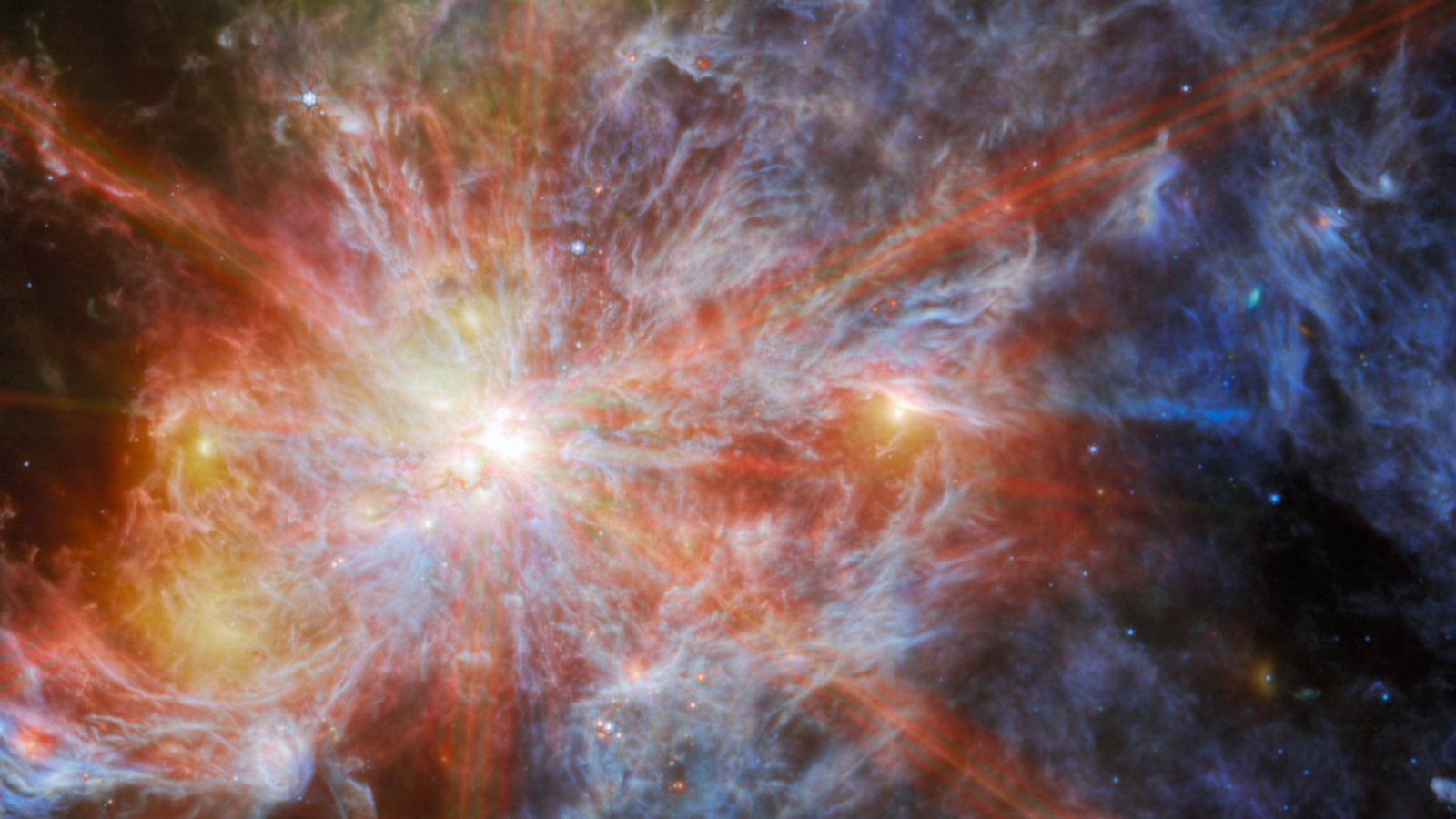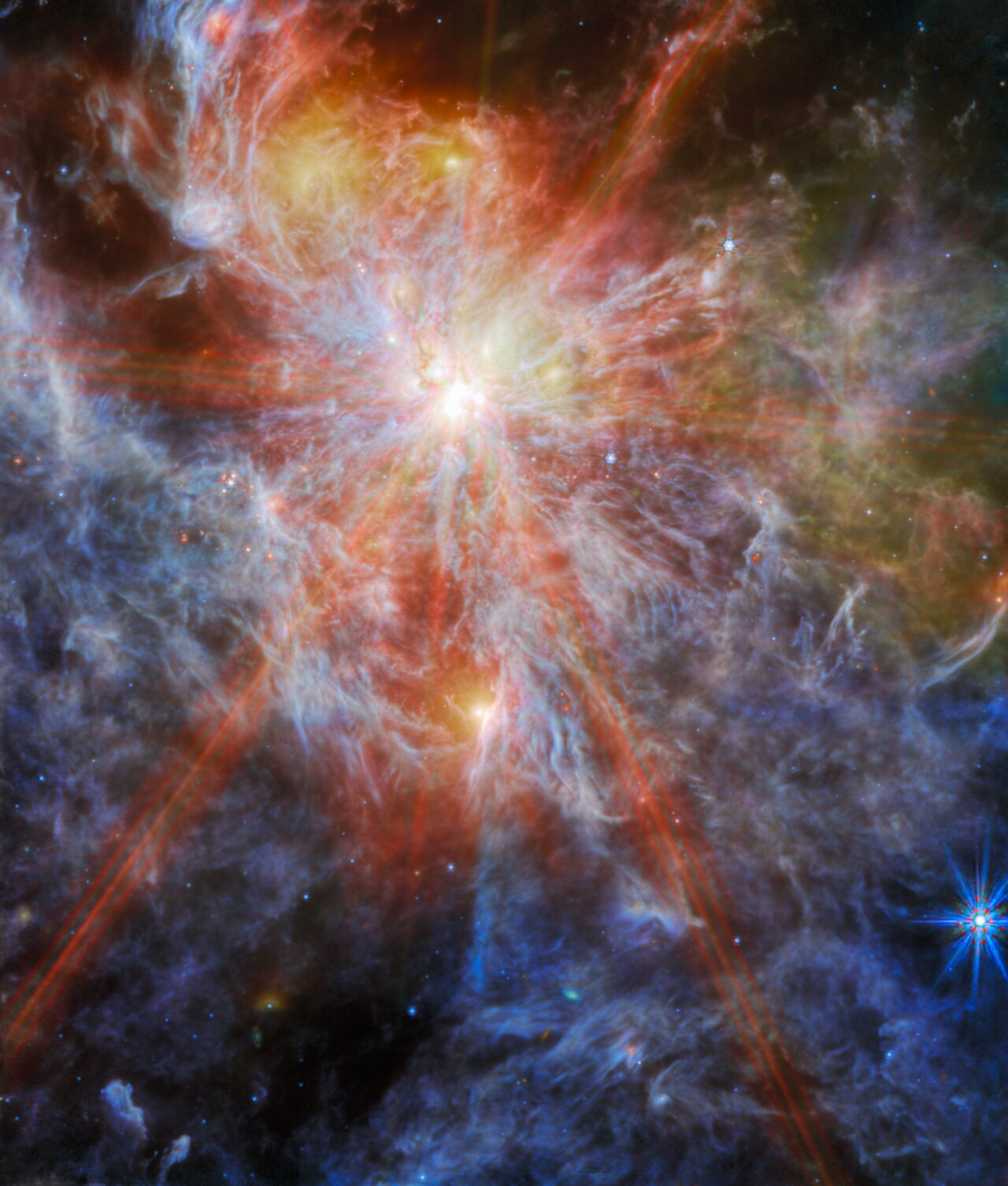Nearby star factory shines in stunning James Webb Space Telescope photo
The powerful space telescope captured a starburst complex in the Large Magellanic Cloud.

A stunning new image from the James Webb Space Telescope (JWST) shows a vast star factory located in a neighboring galaxy in vibrant colors and incredible detail.
The orange, yellow and blue image from the powerful space telescope features the interstellar atomic hydrogen of the 1,630-light-year-wide nebula N79, located in the Large Magellanic Cloud, a satellite galaxy of the Milky Way. This region is actively forming stars and remains virtually unexplored by astronomers.
N79 is considered to be a younger sibling of another recent JWST target in the Large Magellanic Cloud, the Tarantula Nebula, which lies about 161,000 light-years from Earth.
Despite their similarities, scientists think that over the last 500,000 years, N79 has been forming stars at twice the rate of the Tarantula Nebula, officially known as 30 Doradus.
Related: 12 James Webb Space Telescope findings that changed our understanding of the universe in 2023
Studying regions of intense star birth like N79 with the JWST allows scientists to learn about the composition of star-birthing clouds of gas and dust in the early universe, when star formation was at its most intense.
Seeing star formation more clearly with the JWST
The new JWST image focuses on three giant complexes of cold atomic gas called molecular clouds, which comprise what astronomers call N79 South, or S1.
Get the Space.com Newsletter
Breaking space news, the latest updates on rocket launches, skywatching events and more!
One of the most striking aspects of the image is the "starburst" pattern that surrounds the bright heart of N79. This effect is created by diffraction spikes caused by the 18 pieces of JWST's primary mirror as they collect light. These mirrors are arranged in a hexagonal pattern like a honeycomb, meaning there are six main diffraction spikes.
These diffraction spikes arise when JWST studies particularly bright and compact objects that have light emerging from a concentrated location. So, when the $10 billion telescope looks at galaxies, even ones that may appear very small, the light comes from more diffuse and spread-out sources, meaning the diffraction pattern is absent.

JWST captured the new N79 image using its Mid-InfraRed Instrument (MIRI). Visible light is readily absorbed by such dense clouds of dust, but long-wave infrared light goes through more easily. So the infrared view of MIRI allows astronomers to peer deep into this star-forming region.
As a result, JWST is also able to see young stellar bodies that are still cocooned in their natal womb of gas and dust. These so-called "protostars" haven't yet gathered enough material from this envelope to become massive enough to fuse hydrogen to helium in their cores, the process that defines what a star is.
An infant star that has just started this process can be seen as the brightest point in the midst of billowing orange clouds of gas and dust in the JWST N97 image.
The JWST observations of N79 are part of the powerful telescope's mission, which includes (in part) examining the evolution of disks and envelopes of material surrounding stars at different stages of their evolution.
It is hoped that, as part of this mission, JWST will help astronomers get their first look at planet-forming disks of material surrounfing young stars that resemble the sun, thus providing them with a picture of how our solar system formed around 4.6 billion years ago.
Join our Space Forums to keep talking space on the latest missions, night sky and more! And if you have a news tip, correction or comment, let us know at: community@space.com.

Robert Lea is a science journalist in the U.K. whose articles have been published in Physics World, New Scientist, Astronomy Magazine, All About Space, Newsweek and ZME Science. He also writes about science communication for Elsevier and the European Journal of Physics. Rob holds a bachelor of science degree in physics and astronomy from the U.K.’s Open University. Follow him on Twitter @sciencef1rst.









